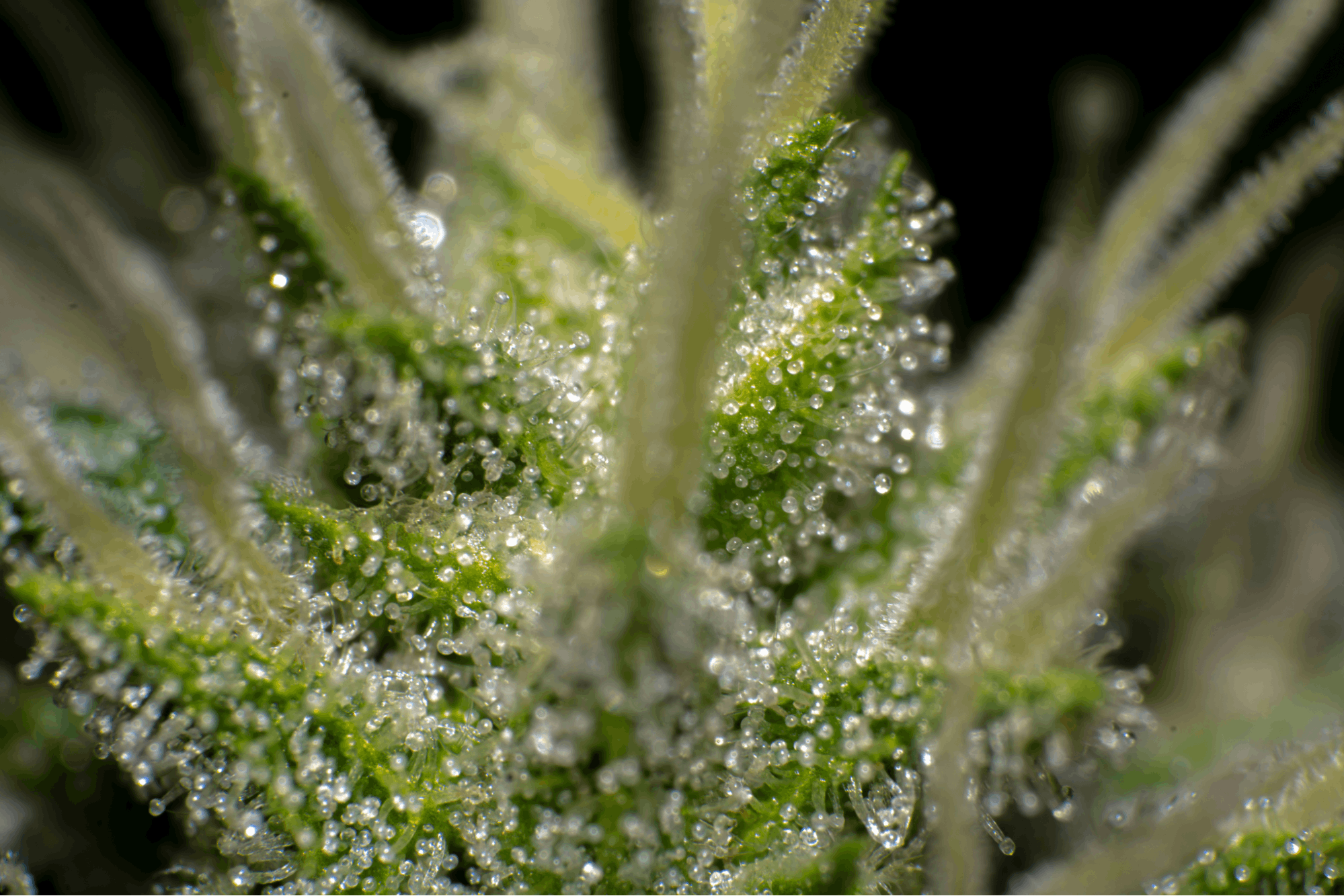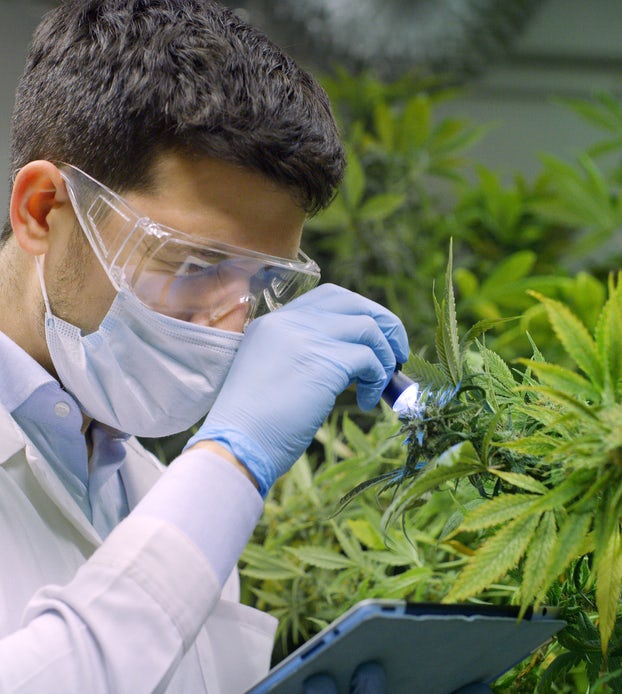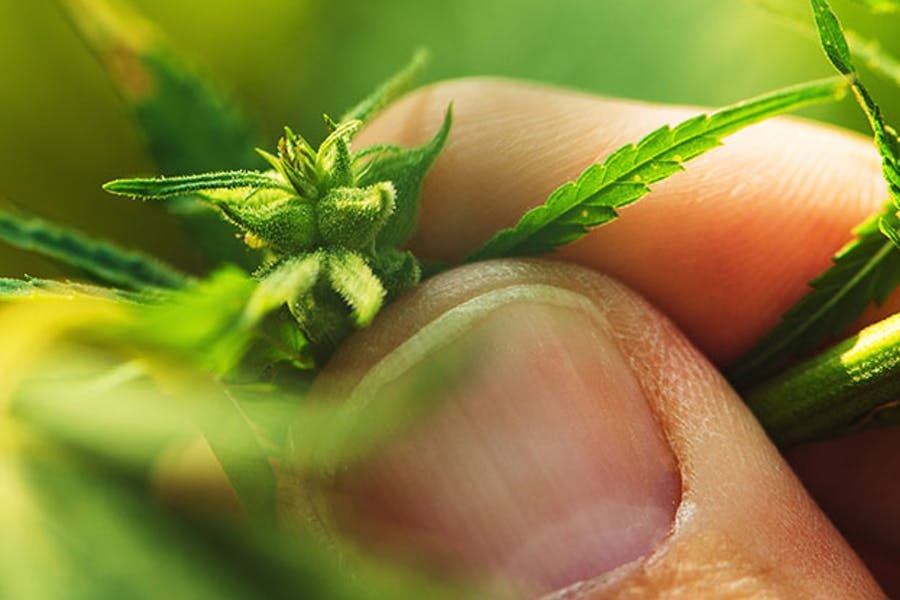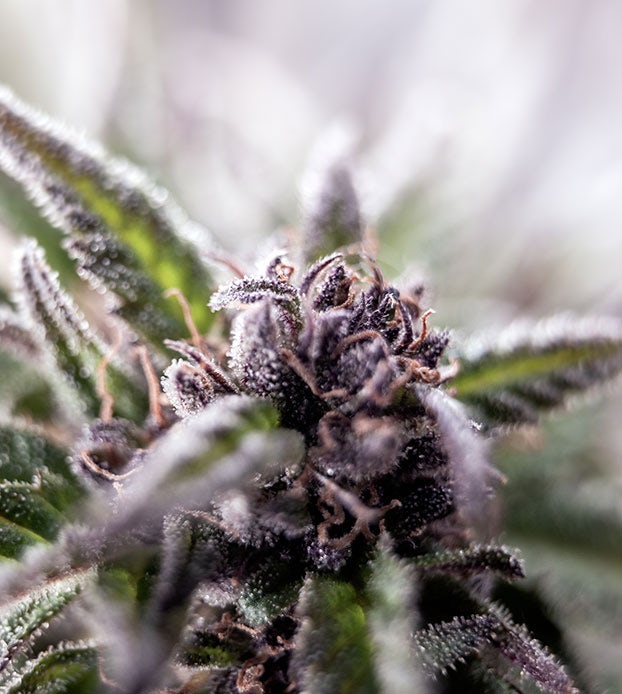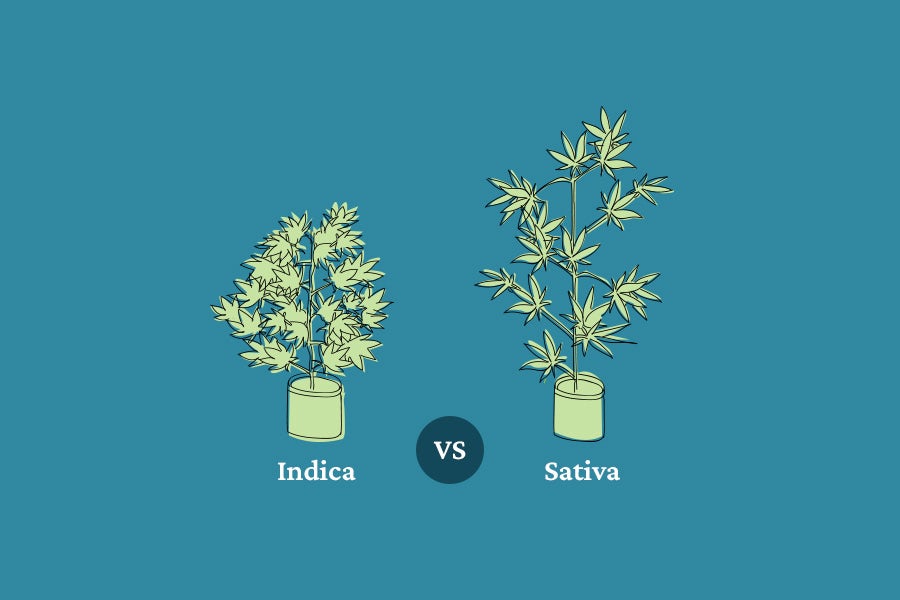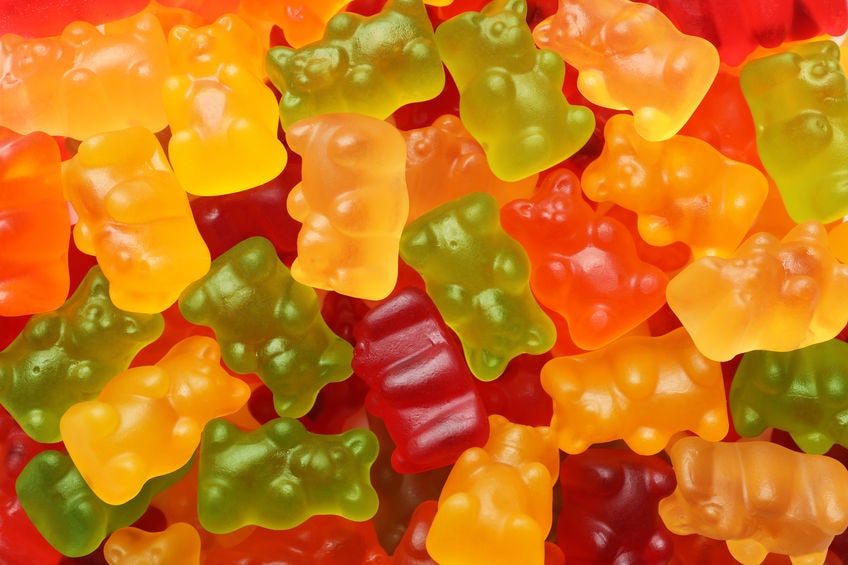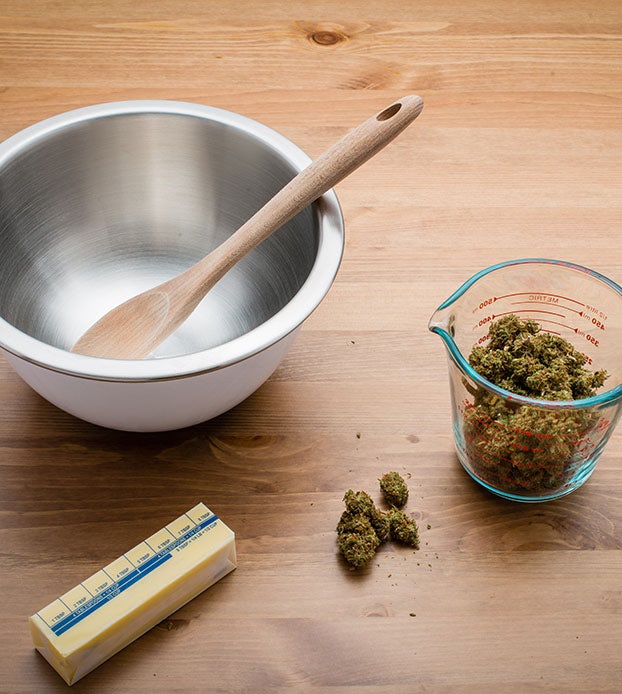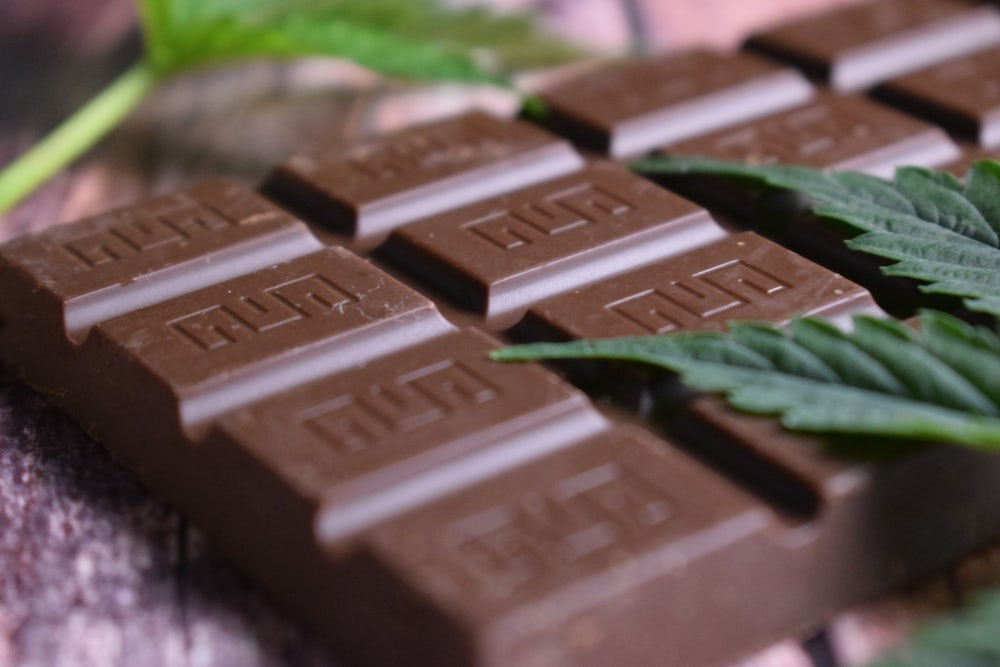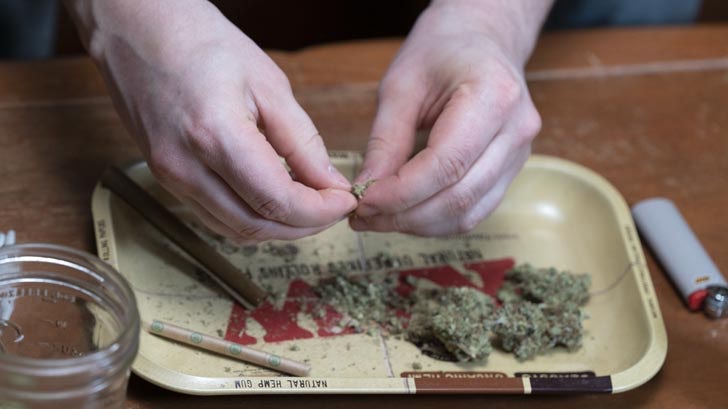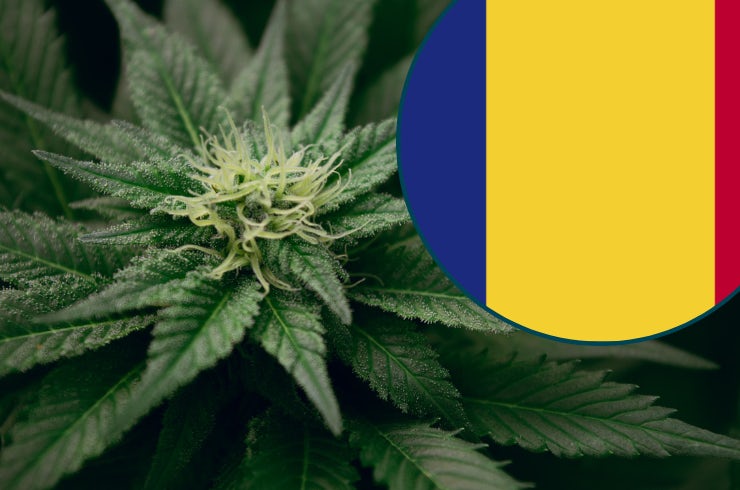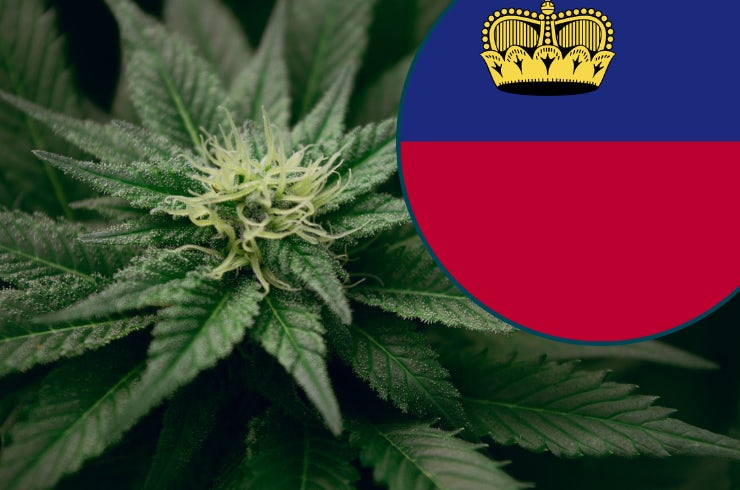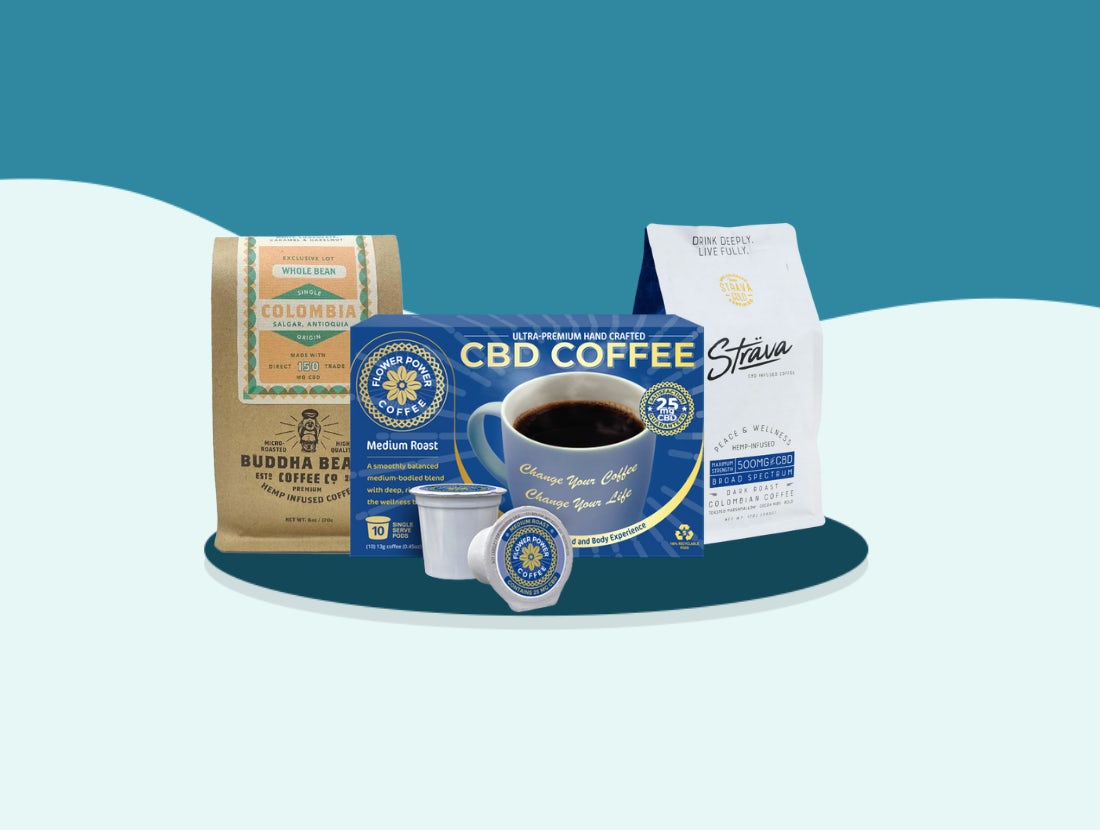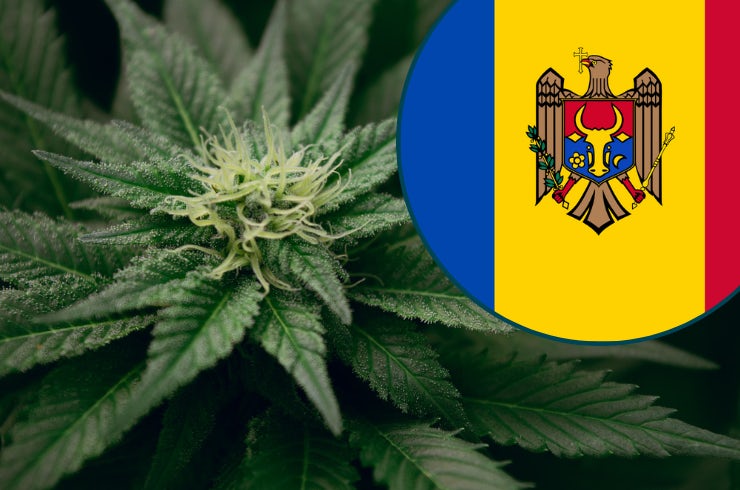While CBG (cannabigerol) has been hailed ‘the mother of all cannabinoids,’ it’s time to reveal the true heir to the throne – cannabigerolic acid, or CBGA. This cannabinoid has only recently been studied, and future studies will certainly divulge its exact importance.
CBGA is naturally produced by the cannabis plant, and is the precursor to all of the phyto-, or plant-related cannabinoids like THC, CBD, CBN and CBG. The CBGA is made within the trichome of the cannabis plant and is converted by specific enzymes into other cannabinoids. 1
What is the difference between CBG and CBGa?
CBGA can also be converted to CBG by way of decarboxylation, a chemical reaction that takes place due to heat, light, or exposure to oxygen over time. This most commonly occurs during the process of smoking cannabis, where the high heats involved in smoking decarboxylate the acidic cannabinoids and deliver the neutral cannabinoids (like CBG or THC) to the lungs. 2
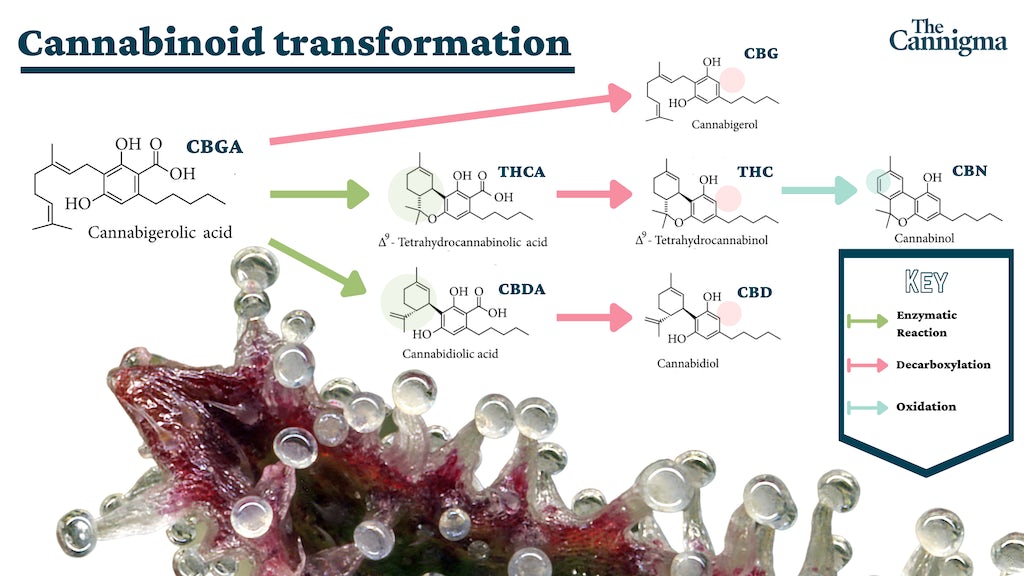
What does CBGA do?
Not much is known about the effects that CBGA has in humans. In fact, it’s unclear exactly how it interacts with the traditional cannabinoid receptors – or if it is likely to interact at all. Often CBGA is presumed to interact with CB1 and CB2 receptors, more similar to THC and or CBG, but emerging science suggests this is likely not the case. It is now believed that the majority of CBGA’s effects are due to interactions outside of the endocannabinoid system. This can shine a light on why the effects of CBGA seem to be elusive and different from THC. 3 4 5
Will CBGA get you high?
Unlike THC, neither CBG nor CBGA are intoxicating. While CBG may act on the endocannabinoid system via CB1 and CB2, that is not thought to be the case for CBGA. Additionally, like all cannabinoid acids, they are thought to be more water soluble and likely do not cross the blood brain barrier as well as their decarboxylated counterparts. And while there is essentially no research to say what CBGA does when taken by humans, CBGA has undergone preliminary (preclinical) research for its effects in seizures, inflammation, diabetes, and even COVID infections. 6
Seizures
- A 2021 animal study published in the British Journal of Pharmacology found that CBGA has potent anticonvulsant effects compared to other phytocannabinoids, but it also found that CBGA is pro-convulsive, suggesting it can actually worsen certain types of seizures at high doses. The conflicting results are expected though, because different types of seizures have different neurochemical influences.
The study also found that CBGA interacts with numerous other important receptors in the body like GPR55, TRPV1 channels, as well as GABA receptors, supporting further consideration and research for use in epileptic patients. 7
Pain and inflammation
- A 2011 in vitro study examined the anti-inflammatory properties of six different cannabinoids, including CBGA. One way to prevent or decrease inflammation is to inhibit the cyclooxygenase enzymes, COX-1 and COX-2. These enzymes are involved in the production of prostaglandins, which are important mediators in the inflammatory process.
The results of the study indicated that THCA, CBG, and CBGA were effective at inhibiting both enzymes as well as decreasing prostaglandin production. Notably, CBGA had the greatest enzyme inhibition, however this did not translate into a greater decrease in prostaglandin formation. More studies are needed to fully understand CBGA’s application in inflammation. However, preliminary research like this is not only hopeful for treating pain generally, but also for preventing certain cancers from developing. Overexpression of the COX-2 enzyme has been associated with colon cancer, and inhibiting this enzyme can prevent malignant cells from forming. 8
Diabetes
- Another study published in 2018 investigated the effects of CBD/CBDA and CBG/CBGA on aldose reductase, an enzyme responsible for glucose formation. In diabetes, this enzyme’s activity increases as glucose levels rise. Too much glucose in individuals with insulin resistance can lead to complications such as neuropathy, kidney disease, as well as a host of eye diseases including glaucoma.
The results of the in vitro study show that both CBD/CBDA and CBG/CBGA significantly inhibited aldose reductase activity (>70%). The acidic components (CBGA and CBDA) had even greater inhibition, indicating that they could be more effective at preventing diabetes complications. 9
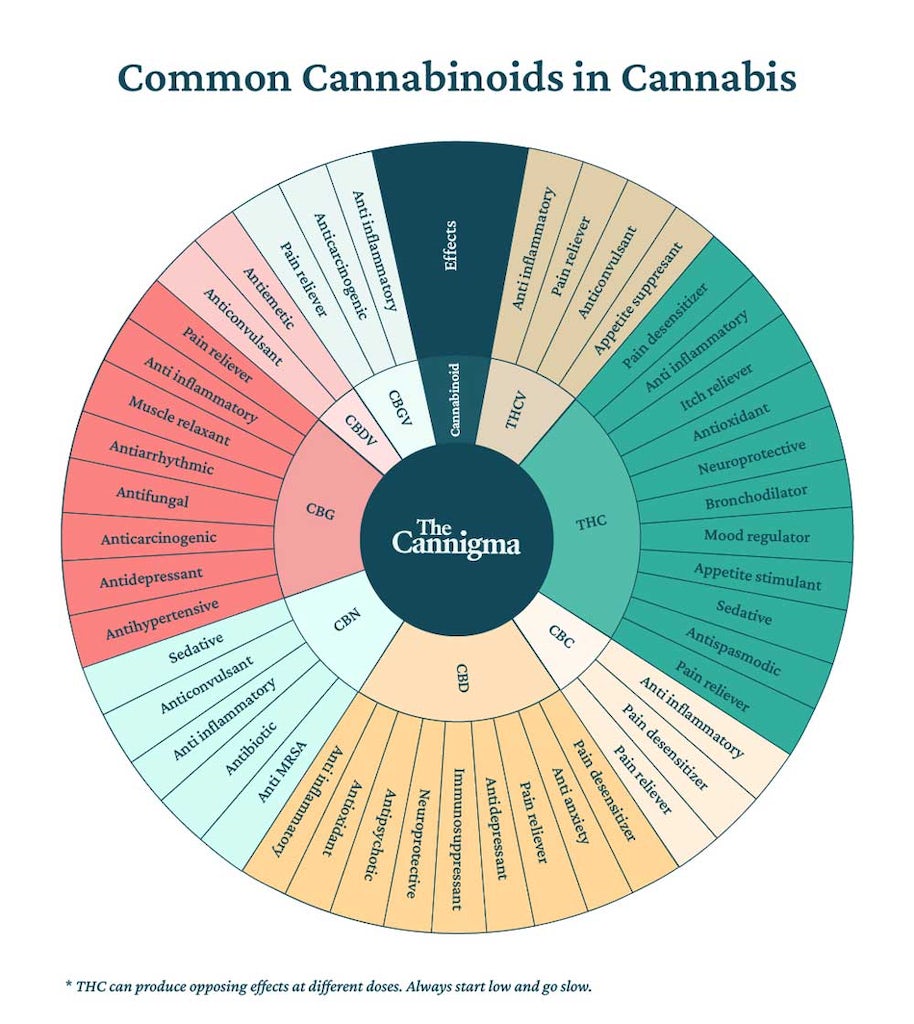
CBGA and COVID-19
Recently, CBDA and CBGA have been investigated for their potential to prevent infection from SARS-CoV-2, the virus responsible for COVID-19. In the 2022 Oregon State University Study, the cannabinoid acids were found to bind to the spike proteins on the virus which are used to gain entry into the host or human cell.
Further analysis indicated that not only do they bind to the spike proteins, but they may also reduce infections or infection severity. This was demonstrated by taking human cells infected with the virus and incubating them with either CBDA or CBGA. After 24 hours, the virus was not detectable.
Although the study used human cells, it was only an experiment done in cells in a lab, not in humans. And while some are hopeful for the potential of CBGA, most experts are not yet convinced of cannabinoids as prevention or treatment of COVID infections.
In an interview with Cannabis Tech, Dr. Dustin Sulak discussed using cannabis to treat symptoms of COVID infection as well as insights on the Oregon study. He noted, “The data in the study isn’t really ready for translation to the clinic.” However he started noticing that his patients were benefiting from using cannabinoid acids to treat the body aches and headaches associated with their COVID infections and they generally felt that their symptoms were more mild. This led him to recommend the acids to his patients suffering from COVID, as well as mention that there is some very early research indicating it could help with the disease process.
“But it’s far too early to know that and to know if we can feasibly reach doses that are relevant to these results,” Sulak added. Meaning, it’s possible that the amount of CBDA and CBGA needed to prevent infection is unattainable in human doses. More preclinical research involving cell cultures and animal models are needed, even before human clinical trials can take place to confirm the effects of cannabinoid acids on COVID infection.
Where can you buy CBGA?
Thanks to the 2018 Farm Bill, producing and selling hemp products is now commonplace in many states. When hemp is harvested earlier than normal, it will yield higher percentages of CBGA when raw. However much of the modern CBG products available today are actually extracted from newly-bred cannabis varieties that don’t have the enzymes to convert CBGA to the other cannabinoids.
Products containing CBGA are available in many forms and are particularly popular as oral products including CBGA capsules and CBGA tinctures. CBGA edibles are harder to come by, but there are some CBGA gummies available, depending on the market you visit. The possibility of a CBGA vape exists, but most products on the market today are decarboxylated CBG vapes.
Most of these products require cold extraction methods in order to preserve the cannabinoid acids and prevent decarboxylation, otherwise they would become CBG products. Keeping that in mind, when flower or bubble hash is pressed with high-pressures and low heat (aka on a rosin press), the resins in the flower are extracted into rosin, much of the CBGA can be preserved, creating a smokable, dab-able form or even edible product that is CBGA-rich. 10
Although CBGA products are somewhat common at local hemp dispensaries, it may be more difficult to find them at adult use and medical marijuana dispensaries. This is largely due to the popularity of THC, but it is common to find products that contain some amount of CBGA and CBG, as nearly every cannabis plant can make these.
Strains that are traditionally rich in CBGA are White, Sour G CBG, and more. Remember to always check for testing results to confirm the cannabinoid profile in products so you can better understand how much you’re consuming, and identify which cannabinoids at which doses produce your desired effect.
Sources
- Tahir, M.N., Shahbazi, F., Rondeau-Gagné, S. et al. The biosynthesis of the cannabinoids. J Cannabis Res 3, 7 (2021). https://doi.org/10.1186/s42238-021-00062-4
- Huestis MA. Human cannabinoid pharmacokinetics. Chem Biodivers. 2007;4(8):1770-1804. doi:10.1002/cbdv.200790152
- Anderson LL, Heblinski M, Absalom NL, et al. Cannabigerolic acid, a major biosynthetic precursor molecule in cannabis, exhibits divergent effects on seizures in mouse models of epilepsy. Br J Pharmacol. 2021;178(24):4826-4841. doi:10.1111/bph.15661
- Nachnani, Rahul, et al. “The Pharmacological Case for Cannabigerol.” Journal of Pharmacology and Experimental Therapeutics, vol. 376, no. 2, 9 Sept. 2020, pp. 204–212., https://doi.org/10.1124/jpet.120.000340.
- Navarro, Gemma, et al. “Pharmacological Data of Cannabidiol- and Cannabigerol-Type Phytocannabinoids Acting on Cannabinoid CB1, CB2 and CB1/CB2 Heteromer Receptors.” Pharmacological Research, vol. 159, Sept. 2020, p. 104940., https://doi.org/10.1016/j.phrs.2020.104940.
- Russo EB. Cannabis Therapeutics and the Future of Neurology. Front Integr Neurosci. 2018;12:51. Published 2018 Oct 18. doi:10.3389/fnint.2018.00051
- Anderson, Lyndsey L., et al. “Cannabigerolic Acid, a Major Biosynthetic Precursor Molecule in Cannabis, Exhibits Divergent Effects on Seizures in Mouse Models of Epilepsy.” British Journal of Pharmacology, vol. 178, no. 24, 30 Aug. 2021, pp. 4826–4841., https://doi.org/10.1111/bph.15661.
- Smeriglio, Antonella, et al. “Inhibition of Aldose Reductase Activity by Chemotypes Extracts with High Content of Cannabidiol or Cannabigerol.” Fitoterapia, vol. 127, June 2018, pp. 101–108., https://doi.org/10.1016/j.fitote.2018.02.002
- Van Breemen RB, Muchiri RN, Bates TA, et al. Cannabinoids Block Cellular Entry of SARS-CoV-2 and the Emerging Variants. J Nat Prod. 2022;85(1):176-184. doi:10.1021/acs.jnatprod.1c00946
- Anderson, Lyndsey L., et al. “Cannabigerolic Acid, a Major Biosynthetic Precursor Molecule in Cannabis, Exhibits Divergent Effects on Seizures in Mouse Models of Epilepsy.” British Journal of Pharmacology, vol. 178, no. 24, 30 Aug. 2021, pp. 4826–4841., https://doi.org/10.1111/bph.15661.
Sign up for bi-weekly updates, packed full of cannabis education, recipes, and tips. Your inbox will love it.

 Shop
Shop Support
Support